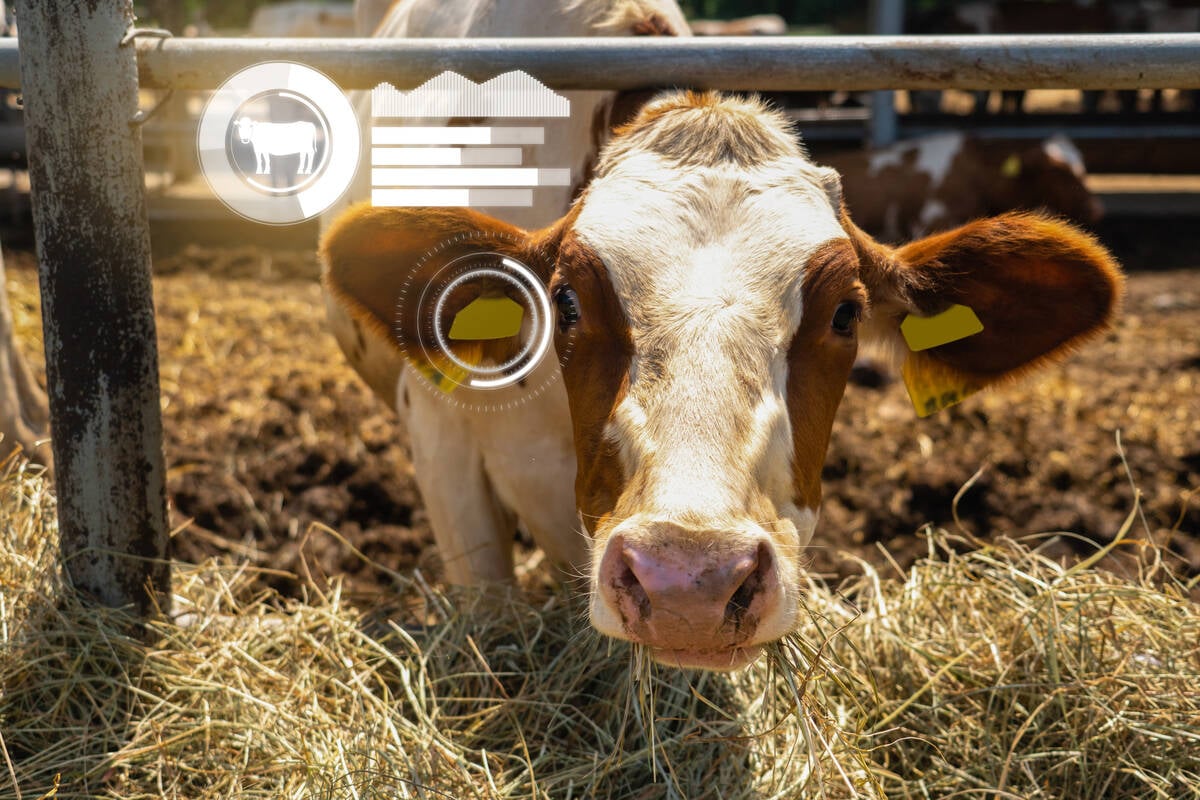If you’re a regular reader, you’ll know that I live on a farm in southeast Saskatchewan where our Internet access is not exactly stellar. I’ve written in these pages that the Internet has become a basic service — something we absolutely need in rural areas.
And so, when I came home from our Christmas holiday and heard about the CRTC’s new announcement, I was doing cartwheels on the lawn.
But, when I crawled back in through the snowbanks in our back yard and read the fine print, I realized that the CRTC announcement may not actually be life-changing — at least not right away.
Read Also

Cows in the cloud
Beef cattle herd management software has become an essential tool over 15 years for Lonesome Dove Ranch in Saskatchewan.
Not that it’s bad news! The CRTC has clearly stated that access to broadband Internet is a “universal service objective.” And, the CRTC acknowledged that, for many rural Canadians, Internet access is not all it could be: “While most are well-served, many Canadians, particularly those in rural and remote communities, do not have access to broadband Internet access services that are comparable to those offered to the vast majority of Canadians in terms of speed, capacity, quality and price.”
It’s always a relief when someone in authority acknowledges your problem, even if they can’t fix it.
The objectives
On December 21, the CRTC set out three new targets. I’ll quote them here for you:
- “Speeds of 50 Mbps download / 10 Mbps upload for fixed broadband services;
- An unlimited data option for fixed broadband services;
- The latest mobile wireless technology available not only to all homes and businesses, but also along major Canadian roads.”
This sounds great. And to make it even better, the CRTC is putting a $750-million fund in place to makes sure these three objectives are met. But, hold your cartwheels. It’s not at all clear that these first two goals apply to my situation and they may not apply to yours.
The first two objectives are related to “fixed broadband.” This definition is typically used to mean a wire or cable brings the Internet into your house. In the background documents, the CRTC estimates that 82 per cent of Canadians already have access to fixed broadband services with download speeds of at least 50 Mbps.
I am not in this lucky 82 per cent. The nearest cable is quite a few miles from our farm, and the costs of running a cable out here seem to be more than it would be feasible to pay.
In its documents, the CRTC says it expects fixed broadband Internet “to be available in 90 per cent of Canadian premises by the end of 2021, and in the remaining 10 per cent of Canadian premises within 10 to 15 years.”
So, there is hope, if I can only convince my 10-year old to wait 10 to 15 years to update “Plants vs. Zombies Garden Warfare” for his Xbox. (Luckily, he goes to a rural school, so most of his friends are also waiting patiently for the download to finish.)
Because we don’t have a fixed cable, we access the Internet through a tower, wirelessly — “fixed wireless broadband.” This is not the same thing as the “mobile wireless technology” the CRTC refers to in its third objective. Mobile wireless technology is the 3G and 4G data that you use to watch Facebook videos on your phone. If you don’t have access to cellular data at your farm, it’s your time to do cartwheels — snowbanks or not. This could make a big difference for you.
We have pretty good cell service on our farm, but as anyone who’s used their phone Internet as a WiFi hotspot knows, most cell phone plans come with limited data, and high costs if you accidentally download more than your allotted amount. While my phone plan theoretically offers unlimited data, when I download too much in one month I get a text telling me that, to make things fair for everyone, my data speed will be throttled back to nearly nothing until the end of the billing period. While the CRTC objectives mention unlimited data for users with fixed broadband connections, there is no mention of requiring SaskTel to make truly unlimited data plans available to those farmers who have no other options.
The promise and the truth
The problem with a lot of things related to Internet speed is that the theory doesn’t match the reality.
In theory, my Internet problems should already be solved.
Back in 2011, the CRTC issued Telecom Regulatory Policy CRTC 2011-291. In this document, the CRTC said: “it would be in the public interest to establish universal target speeds for broadband Internet access in Canada. This should ensure that all Canadians, particularly those in rural and remote areas, can benefit from a great level of broadband connectivity. In this decision, the Commission establishes target speeds of 5 Mbps downstream and 1 Mbps upstream.”
In 2017, the best Internet provider I can find in my area offers me a maximum download speed of 2 Mpbs. That’s the advertised speed. As with most companies, in reality our download speeds aren’t usually as fast as the advertised top speed. The provider we use has great service staff who do their best to keep me happy; they just don’t have access to more spectrum, and I’m five country miles away from their tower.
A sharp-eyed reader from the CRTC might argue that I have access to download speeds of 5 Mbps through a national company that offers Internet service via satellite. This is not untrue. However during “peak periods” this company slows certain data well below that speed according to its “traffic policies.” Other users updating Facebook, playing online video games or watching Ghostbusters on Netflix would get priority over me while I tried to upload a Grainews photo to our Winnipeg server. As well, when I input my postal code into the company’s website, it outputs a statement saying that it “wouldn’t recommend” me trying to use Netflix with the plan they could offer me out here.
And so, I’m still in the same place I was on December 21, when I was out in the sun, blissfully unaware of the CRTC’s latest announcement.
The Internet speed the CRTC thinks city people need is 25 times the speed I’m supposed to be getting, and five times the speed the CRTC has declared as a “target speed” for people like me. Now, there is a new fund in place to focus on making sure city people can watch Netflix on three devices at once, while I’m still waiting to download the map of areas with fixed broadband posted on the CRTC’s website.
As I’ve said before in this space, it was never any different. Electricity, telephones, television channels… all of these things came later to rural areas than cities. When my 10-year old complains about slow download speeds, I counter by telling him “when I was your age, we only had two TV channels.” Today we have way more TV channels than anyone would ever want to watch. I can imagine it now… one day, decades from now, my son will use his insanely fast on-farm Internet connection to tell me by video-link about his own kid’s complaints: “I have to drive all the way to Weyburn to use the teleport machine to get to Hawaii.”















